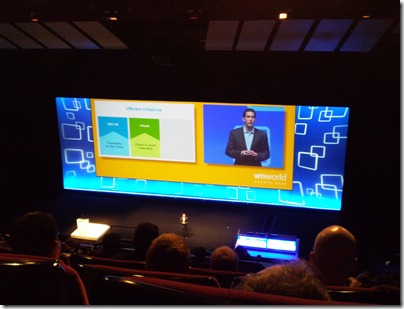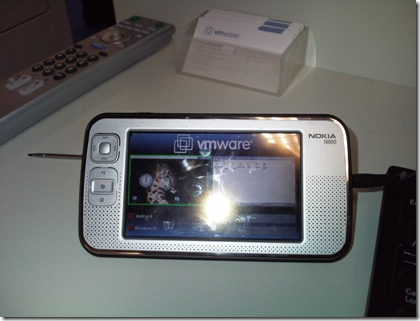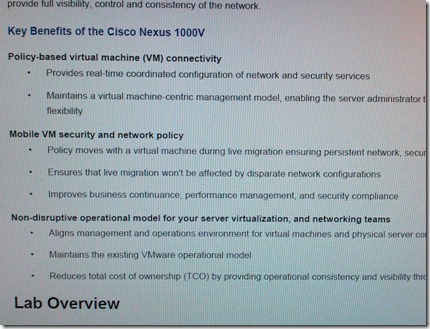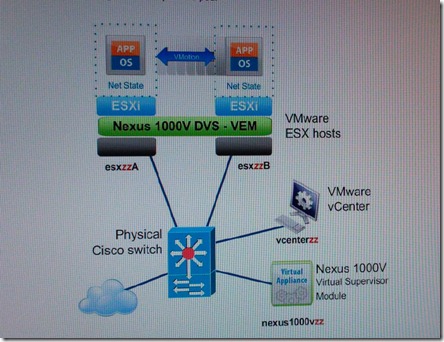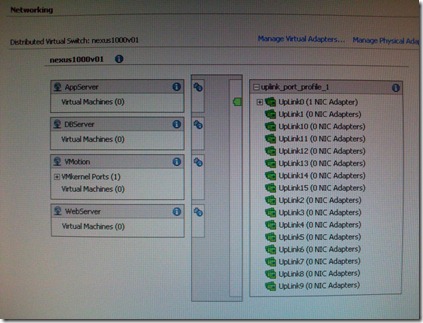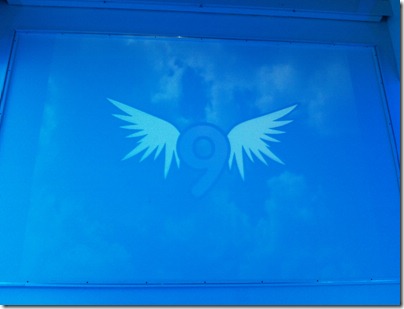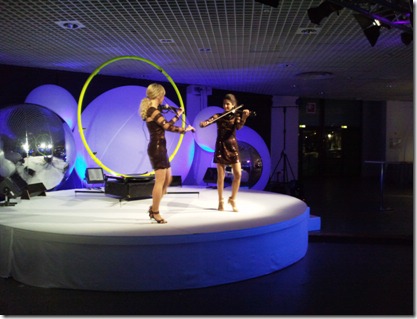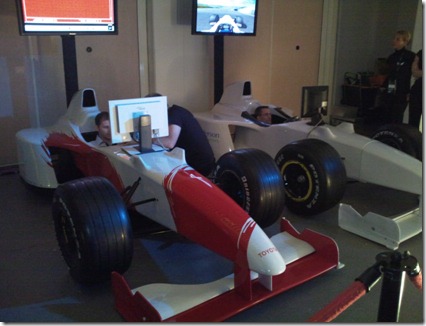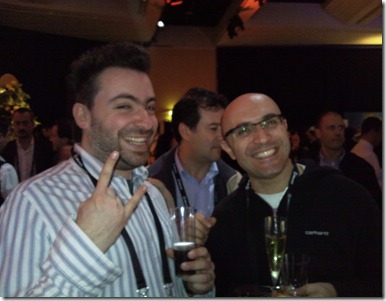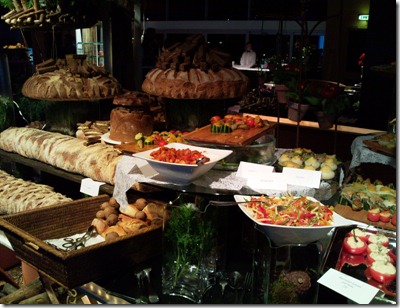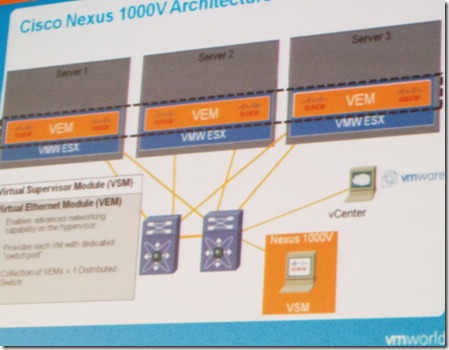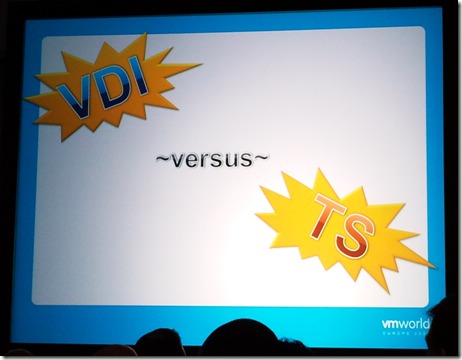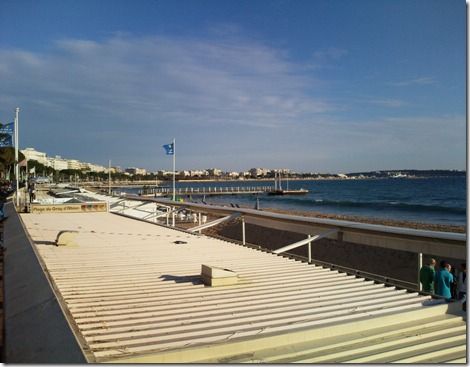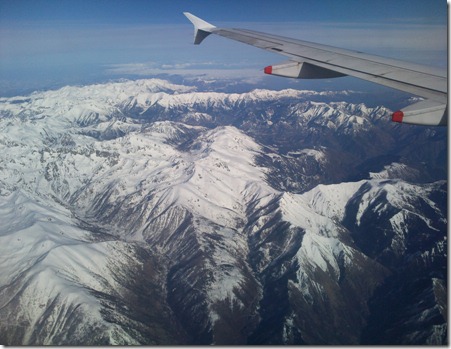Good morning everybody! First and foremost: congratulations to my Xylos college Geert Baeke on becoming a VMware vExpert!!! Check it out here. He deserves it as he must be one of the granddaddy bloggers. So I guess he will be driving his BMW M5 soon ;)
Here is a small recap on some of the things we did yesterday.
In the general session, Stephen Herrod (the company CTO and Senior Vice President of R&D) talked about VDC-OS, the vCloud and vClient initiatives in more detail.
vCenter is one of the focus points during the keynote:
- Availability: vCenter will have an Active/Passive model using heartbeat (based on Neverfail technology)
- Scalability: there will be a possibility to use a feature called “Linked-mode”. You can connect to a maximum of 10 vCenters using a single VI Client. Oh yes, to search through al these VMs and hosts you will have the ability to use an (advanced) search feature.
- Automation: of course, the eagerly awaited Host profiles feature will be spot on for operations teams to keep their ESX deployments in synch. A short demo was shown where a new ESX was added to the cluster and immediately made compliant with the profile.
- Linux: VMware finally created a vCenter in a Linux appliance
The new componentized model of vSphere is explained in more detail: vStorage (SAN API’s to offload certain features to the SAN => see my previous comments on the NetApp session yesterday), vNetwork aka distrivuted switching and the omnipresent Cisco Nexus 1000V and vCompute.
vCloud
The concept of the vCloud is definitely an important one: once we have vSphere, VMware will be able to leverage some long distance (storage?) VMotions into or out of the internal/external cloud via a concept known as a “Private cloud”. A short demo with the new vCloud plug-in was shown.
vClient
Stephen talks about Mobile Virtualization Platform (MVP) and the PCoIP (PC over IP) concept using advanced hardware (will be software in the future) acceleration techniques such as Teradici 3D/2D mulitimedia accelerators.
Then a Nokia N800 is brought onto the stage to show what the mobile hypervisor will be capable of: a dual- OS using on the one hand Windows CE as the “business” mobile OS, and Google Android for your personal settings.
We decided it was time to do some Labs. First, we did the vCenter data recovery Lab (BTW, it reminds me of a product called ESXpress). Anyway, it’s based on a virtual appliance and a vCenter plug-in.
In a nutshell: you must prepare your backup destination (for example a network share), and create a backup plan using a specific retention policy. By default, data is de-duplicated
File-level restore will be available to in the final version and it will be possible to change the network settings when doing a restore rehearsal (currently, the restore rehearsal boots up the same VM with the same IP by default)
Check out Yellow-Bricks for more info on the hot-add feature used in the virtual appliance to do the backup: http://www.yellow-bricks.com/2009/02/25/vmworld-day-2-random-stuff-and-data-recovery/
Another lab we followed was the one on the new Cisco Nexus 1000V. As I said in my last blog, this is all about vNetwork: use a managed distributed switch in vSphere to leverage monitoring, Access lists, etc, on your vSwitches. A Virtual machine always uses the same Veth marker, so this is useful after DRS/VMotion is triggered. Check out the key benefits in the screenshot below:
Here is another overview of the Nexus architecture:
A Nexus enabled vSwitch looks something like in the screenshot below: note the UpLink0 (a number of uplink port profiles is created by default BTW) that is used to connect the assigned NICs to your distributed vSwitch. Note the Manage Virtual and Physical adapters links ;)
And then it was… party time! A lot of food/drinks/live music/arcade gaming and beautiful women. Happy times in the Cloud Nine!
